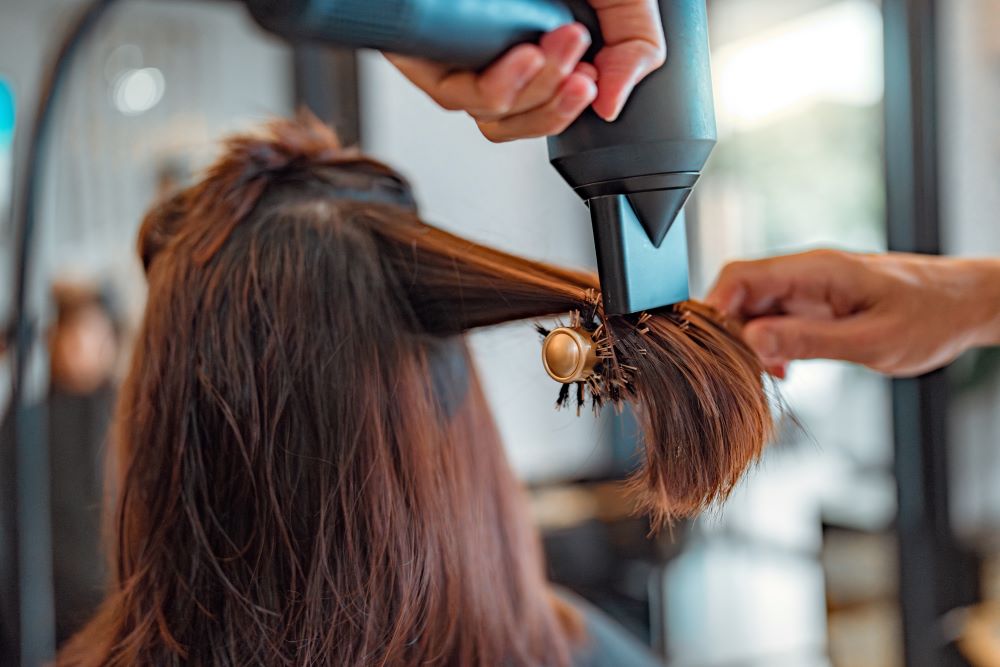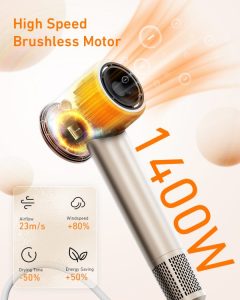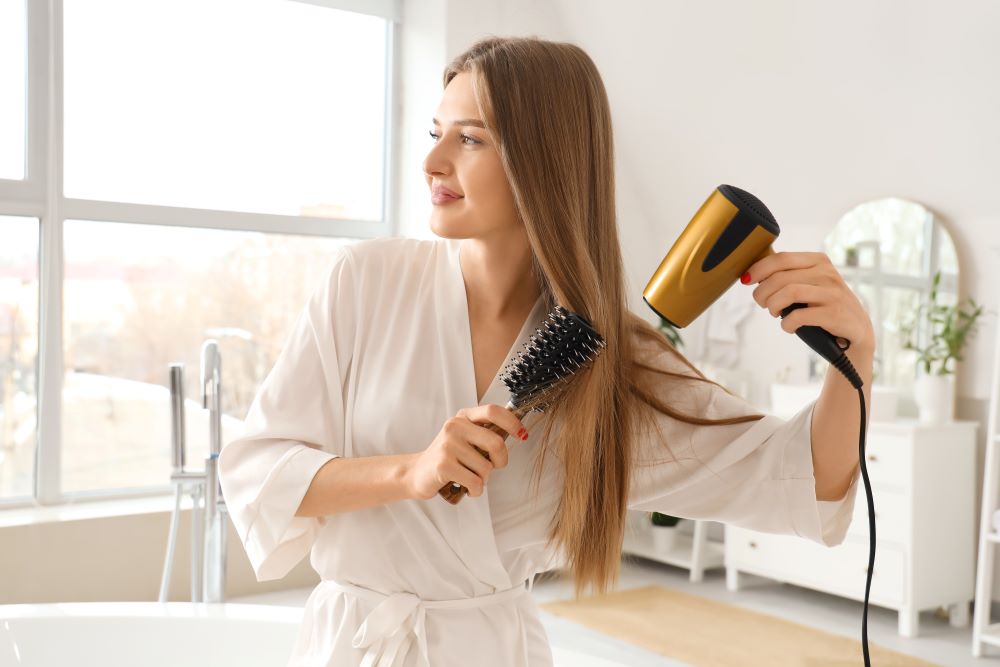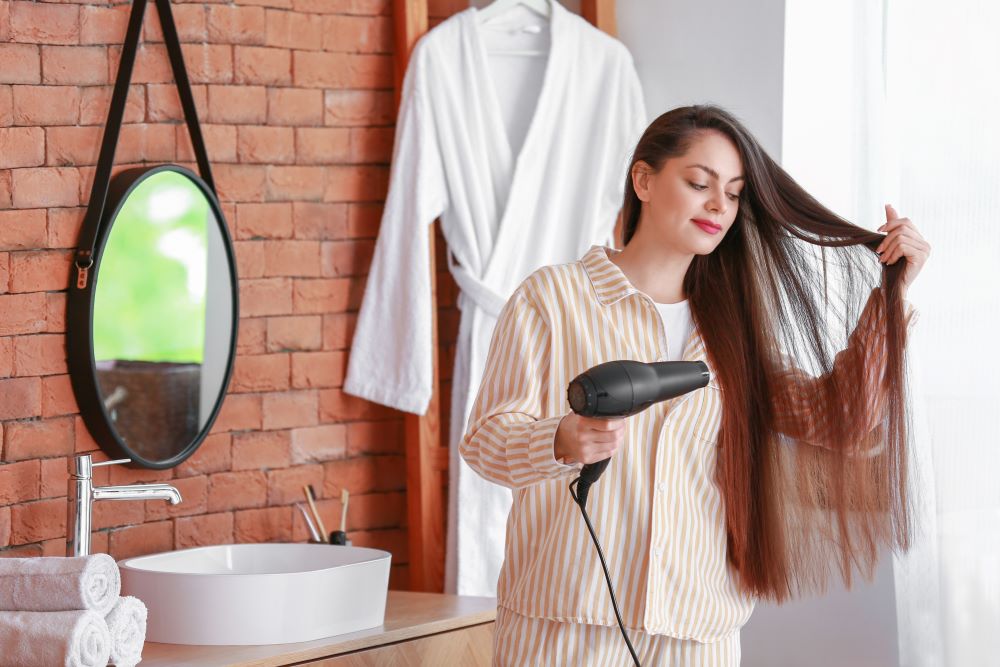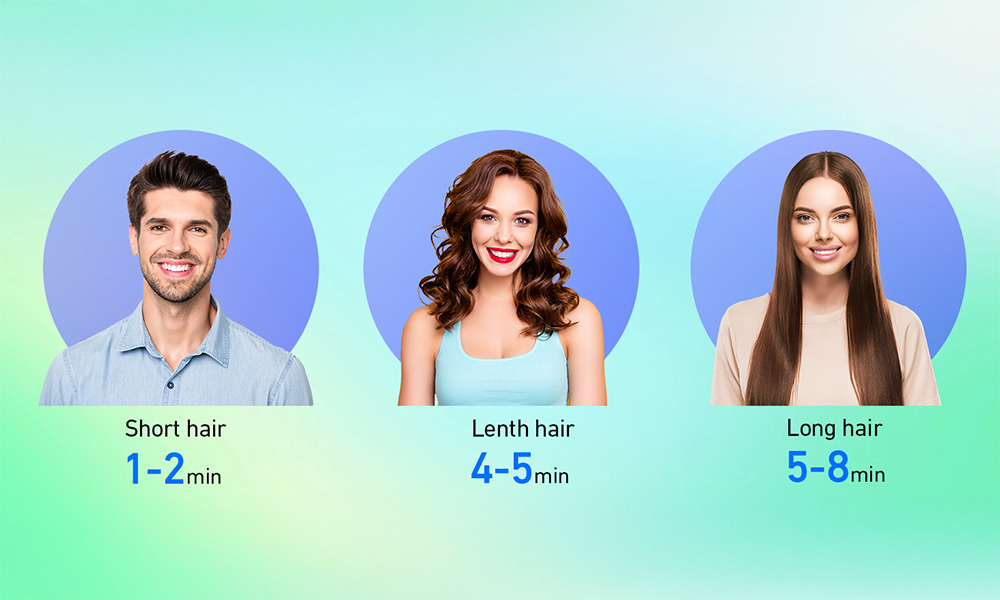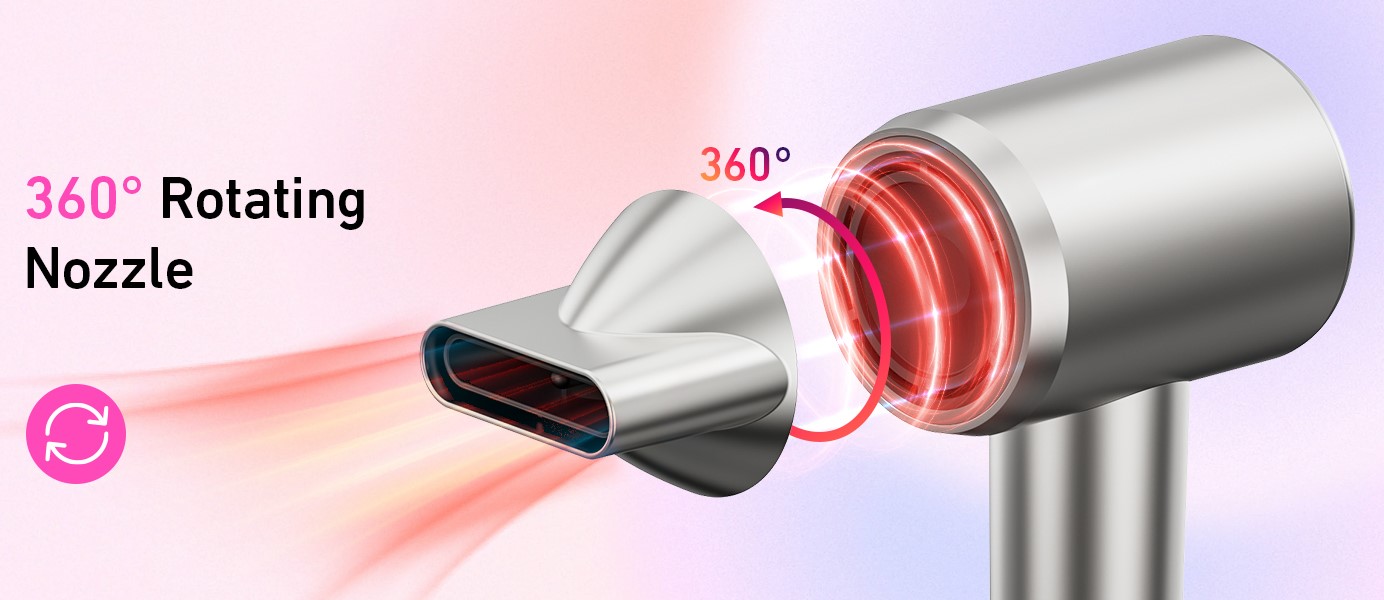
- Home
- Hair Dryer
- Best Picks
- Decoding the Power: Understanding Hair Dryer Wattage and Its Effects
Decoding the Power: Understanding Hair Dryer Wattage and Its Effects
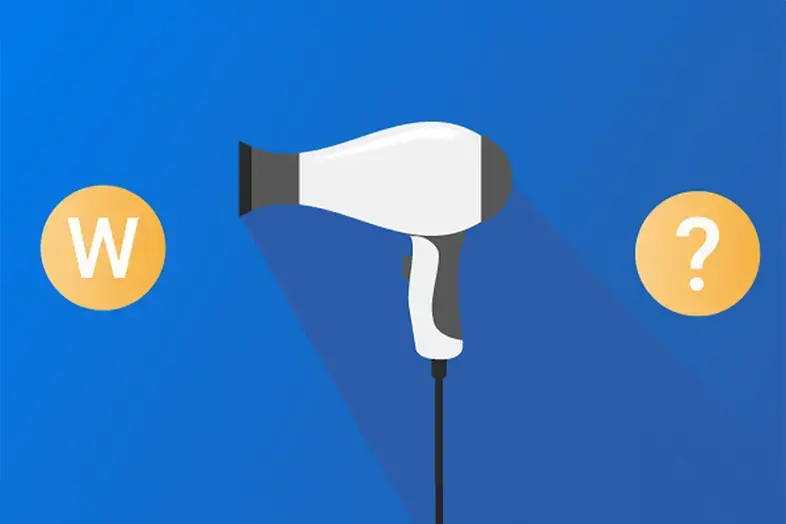
In this blog, we’ll start by demystifying the concept of wattage. Wattage, simply put, is a measure of how much power an electrical device consumes. In the context of hair dryers, wattage directly influences the device’s efficiency and effectiveness. We’ll explore how wattage relates to the power output of hair dryers and what that means for everyday users.
Here, we delve into why wattage is a key factor to consider when selecting a hair dryer. The wattage of a hair dryer affects not only how quickly it can dry hair but also impacts heat control, energy consumption, and overall performance. Understanding the importance of wattage can help consumers choose a hair dryer that best suits their hair type and styling needs.
The Science Behind Hair Drying
How Hair Dryers Work
This section will explain the mechanics of hair dryers. We’ll cover the basic components – the electric motor, the fan, the heating element, and the controls. We’ll illustrate how these parts work together to blow hot air that evaporates water from the hair, and how different designs and technologies in hair dryers can affect this process.
Role of Wattage in Heat and Air Flow
Wattage plays a crucial role in determining the efficiency of a hair dryer. Higher wattage generally means more power for heat and stronger air flow, leading to quicker drying times. However, there’s a balance to be struck, as too much heat can damage hair. This segment will explore how different wattage levels affect the heat and air flow of hair dryers, and what that means for the user.
Comparing Low, Medium, and High-Wattage Hair Dryers
Pros and Cons of Each Type
Each range of wattage in hair dryers comes with its own set of advantages and drawbacks. Low-wattage hair dryers are usually more energy-efficient and gentler on hair, but may take longer to dry hair completely. High-wattage hair dryers offer quick drying times and powerful performance, but can lead to higher energy consumption and potential hair damage. Medium-wattage hair dryers strive to balance efficiency with gentle drying. This section will provide a detailed comparison to help users understand which might be best for their needs.

Ideal Situations for Different Wattages
The choice of wattage can vary based on individual needs and hair types. For instance, thin or fine hair might benefit from a lower wattage dryer to prevent heat damage, while thick or coarse hair might require a high-wattage dryer for effective drying. This part of the blog will offer guidance on choosing the right wattage for different hair types and styling requirements, such as quick drying for busy mornings or gentle drying for hair health preservation.
Effects of High-Wattage Hair Dryers on Hair Health
Potential Damage and How to Mitigate It
High-wattage hair dryers provide quick drying and styling benefits but come with potential risks to hair health. The intense heat can lead to moisture loss, making hair prone to breakage and split ends. Over time, this can weaken hair strands, reduce natural shine, and cause frizziness.
To mitigate these effects, it’s crucial to use heat protectant sprays or serums that form a protective barrier around the hair shaft. Additionally, maintaining a healthy distance between the hair dryer and your hair (preferably at least 6 inches) and constantly moving the dryer can prevent excessive heat concentration on any particular area. Using a diffuser attachment can also help distribute the heat more evenly, reducing the risk of heat damage, especially for those with curly or delicate hair.
Tips for Safe Usage
Regulate Temperature and Speed: Use medium to low heat settings. Higher speeds can be used for initial moisture removal, but finishing with a cooler setting helps close hair cuticles, enhancing shine and health.
Condition Regularly: Deep conditioning treatments help to restore moisture balance, essential for hair exposed to high heat.
Avoid Daily High Heat: Limit the use of high-wattage hair dryers to when it’s necessary. Embracing natural drying methods when possible can give your hair a break from heat exposure.
Use Quality Hair Dryers: Invest in hair dryers with advanced technology that offers consistent heat distribution and features like ionic or ceramic technology to reduce heat damage.
Energy Efficiency and Environmental Impact
Wattage vs. Energy Consumption
The wattage of a hair dryer directly influences its energy consumption. Higher wattage translates to greater energy use, which can have a noticeable impact on your electricity bills and the environment. While a high-wattage hair dryer can offer faster drying times, it’s important to balance this with the energy cost involved.

Eco-Friendly Hair Drying Practices
Efficient Usage: Being mindful of drying time can significantly reduce energy consumption. Avoid over-drying; stop when your hair is just dry enough.
Regular Maintenance: Clean the lint filter regularly to maintain the dryer’s efficiency and prolong its lifespan.
Invest in Energy-Efficient Models: Look for hair dryers that are designed to be more energy-efficient, often marked with energy-saving certifications.
Combine Air-Drying and Blow-Drying: Allow your hair to air dry partially before finishing with a blow dryer. This practice not only reduces heat damage to your hair but also cuts down on energy usage.
Recycle Old Hair Dryers: When it’s time to replace your hair dryer, consider recycling the old one. Some manufacturers and recycling programs accept old appliances, preventing them from ending up in landfills.
Choosing the Right Wattage for Your Hair Type
Guidelines for Different Hair Textures and Lengths
Fine or Thin Hair: For this hair type, a lower wattage hair dryer (around 1200-1500 watts) is ideal. High heat can damage fine hair, so it’s better to use a gentler flow of air and heat.
Thick or Coarse Hair: Thick hair requires more power for effective drying without spending too much time. A hair dryer with 1800-2000 watts is suitable for this hair type, providing strong airflow and heat to penetrate thick hair strands.
Curly Hair: Curly hair is prone to frizz, and the right wattage can help manage this. A medium-wattage hair dryer (around 1600-1800 watts) with a diffuser attachment works best, offering enough power without disrupting the hair’s natural texture.
Short to Medium Length Hair: Shorter hair can typically be dried effectively with lower wattage. Around 1400-1600 watts would be sufficient, balancing drying time and heat exposure.
Long Hair: Long hair benefits from a higher wattage (1800-2000 watts) to reduce drying time and lessen heat exposure duration, which can lead to damage over time.
Expert Recommendations
Consult with a hairstylist: Your stylist can provide personalized advice based on your hair type and condition.
Consider multiple heat settings: A hair dryer with adjustable heat and speed settings offers greater flexibility for different hair types and styles.
maxodo High-Speed Hair Dryer
Revolutionizing the way we think about hair care, the maxodo high-speed hair dryer combines cutting-edge technology with a sleek design. Boasting a powerful 1400W motor, it offers a perfect balance of efficiency and gentle care, making it an ideal choice for various hair types. Its innovative features ensure fast drying time while minimizing heat damage, redefining the standards of home hair care.
The Future of Hair Dryer Technology
Innovations in Wattage and Efficiency
Advanced Motor Technology: Future hair dryers are expected to feature more efficient motors that provide high power with lower wattage, reducing energy consumption without compromising on performance.
Intelligent Heat Control: Innovations in temperature regulation will protect hair from heat damage, with sensors adjusting the temperature based on hair moisture levels.
Anticipated Trends in Hair Care Appliances
Eco-friendly Designs: There will be a growing trend towards environmentally friendly hair dryers, using sustainable materials and energy-efficient designs.
Smart Hair Dryers: The integration of smart technology, such as AI and IoT, will personalize hair drying experiences, with devices automatically adjusting settings based on individual hair profiles and preferences.
Conclusion
The right wattage for your hair dryer is crucial and varies depending on your hair type and texture.
Lower wattage is better for fine or thin hair, while higher wattage suits thick or long hair.
The future of hair dryer technology is promising, with advancements focusing on efficiency, intelligent heat control, and eco-friendly designs.
Choosing the correct wattage for your hair dryer is more than just about drying your hair; it’s about maintaining its health and vitality. By understanding your hair type and the technological advancements in hair dryers, you can make a choice that not only leaves your hair looking great but also preserves its natural beauty and strength. Remember, the best hair dryer for you is one that caters to your unique hair needs while aligning with your values, whether they’re efficiency, environmental consciousness, or technological innovation.
Popular Post

Ultimate Guide to Using a Hair Dryer with Nozzle for Styling
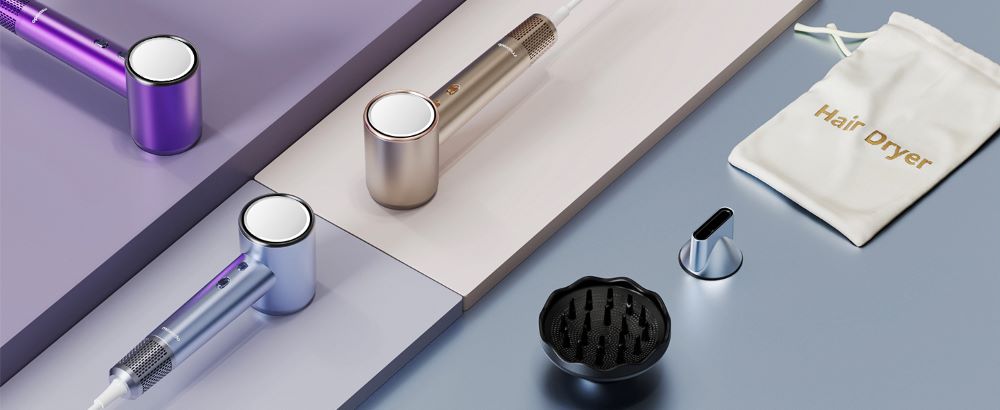
The Benefits of Using a Hair Dryer with a Diffuser
